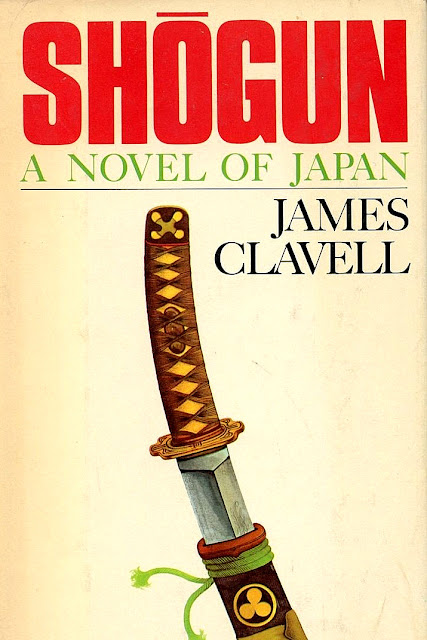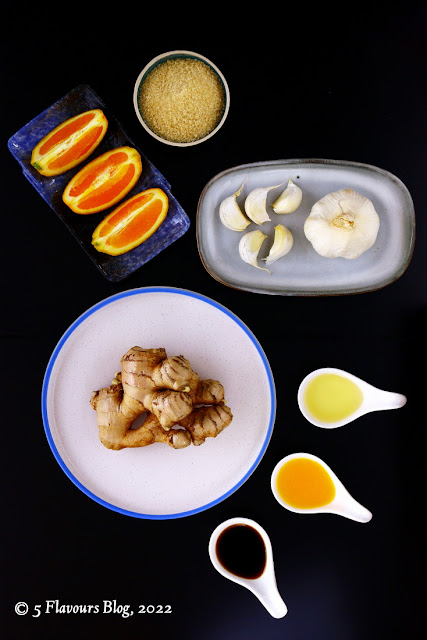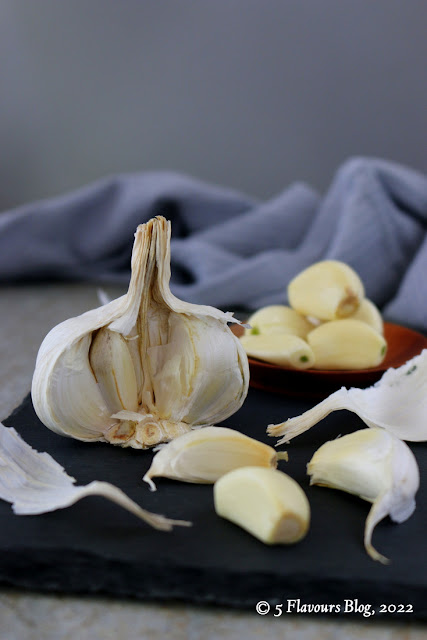Teriyaki Style Sweet & Sticky Sauce
– Jump To Recipe –
– Print Recipe –
My happiest times were
when
i was left alone in
the house on a
Saturday
It all started with the illustrious Richard
Chamberlain as Pilot-Major John Blackthorne and NBC’s Shōgun, the historical TV miniseries from 1980. Maybe I should also
blame the author, James Clavell, on whose eponymous novel the miniseries was
based. When it was eventually broadcast in South Africa, I was by then already
a loner, closely following in the footsteps of my emotionally somewhat distant father.
Pilot-Major Blackthorne demonstrated to a naïve schoolboy of the early 80’s –
already uncomfortable in the presence of his peers – that you really could go
at life alone, just as my father did. After all, he seemed in essence to manage
the lifestyle quite successfully. All you needed was brute academic intelligence,
technical ability, DNA-ingrained perseverance, and a healthy “screw the rest”
attitude. And I had all of those by the bucket load.
Mr Clavell’s Asian Saga, a series of six novels written between 1962 and
1993, awakened a lifelong personal interest in Japan initially, and later on,
the Far East. At one point I seriously considered giving up my undergraduate
studies and future career in Chemistry to instead become a missionary in Japan.
The Plan was to ultimately travel via a series of coastal freighters (working as
a temporary deckhand) to Japan, settle there and thereby swat three birds with
one stone:
·
Doing something truly useful
and “noble” with my life,
·
Studying and immersing
myself in the Japanese culture, and
·
Proving to myself that I
could successfully remain separate and aloof from the maddening crowds.
Yeah, I know: Japan and the madding crowds …
Those were my intellectually arrogant and
emotionally stupid years. A vain and naïve period I've named “The Gullible Stretch”.
Unsurprisingly, it took too many decades of frequent and mostly painful lessons
– large and small – to escape that less than illustrious and empty period. Karma
can be smug and turbo charged V8 bitch when you’re not paying attention.
Yet, the fascination for Japan endured,
enshrined in terms such as the code of bushido
and the histories of the Edo period
and the preceding feudal shogunates, their related wars and Machiavellian machinations. Then there were the culinary concepts and
terms clearly demarcating a cuisine totally alien to my heritage and culture: tataki, sushi, yikatori, teriyaki, udon, sashimi, the Tea Ceremony, kombu,
bonito flakes, dashi stock – a
seemingly endless procession of wonderful surprises and discoveries.
The apparently insane precision and perfectionism
required for formal Japanese cuisine as well as the years of dedicated technical
skill and experience needed, greatly appealed to a mild OCD sufferer such as
me. I could clearly see myself functioning in that milieu: the fanatically
dedicated and ultra focussed chef applying the code of bushido with rigorous ruthlessness to whatever was on the cutting
board in front of me. Always aside, emotions under icy control, functioning
within the herd, yet endlessly apart from the herd: remote, aloof and
emotionally untouched.
Yet, my life did not turn out quite that way.
Life has a nasty and ultimately sarcastic, but quite effective, approach of
slowly and inexorably derailing the best laid plans of mice and men. In my limited
experience it requires vast resources of inner strength, fortitude and
discipline to ignore, resist and reshape the relentlessly incoming tide that is
Life. Looking back with 20/20 hindsight and now crystal clear self knowledge,
this mouse never stood a chance of having it his way.
The mills of God grind slowly, but they grind
exceedingly small.
―
W. Somerset Maugham
The house and household of my parents during the
late 70’s to early 90’s were staunchly conservative and middle class in its
nature and practice. We did not grow up with soy sauce (of whatever kind), rice
vinegar, glutinous rice and fresh ginger. My dad, the industrious and ever impatient
patriot, would’ve done reverse somersaults merely at the idea of having pickled
ginger, bonito flakes or dried seaweed sheets under his roof. Not that you
would’ve been able to find any of those staples locally during that era. And
serving raw fish? God keep us all …
Now, many decades later, there is an opportunity
to investigate those oh so tantalising dishes, methods, concepts and
ingredients. And today we have the blessed and peerless duo of YouTube and
Google to lean on, our sturdy and ever dependable staves on this journey of
discovery.
So, here we’re doing a little twist on the
“3-ingredients-only” staple of Google recipes and the standard teriyaki sauces found
quite frequently on the shelves (with invariably shocking prices) of many of our
larger chain stores today. We’re adding a wee touch of orange juice for a small
Asian adventure that veers somewhat off the beaten path. Along with the orange
juice, black strap molasses is not a standard ingredient either. Yet I find it
adds a dash of extra depth to the overall flavour profile. The bitter sweetness
from the molasses tempers the light soy sauce’s saltiness to some degree without
having to add heaps of sugar to try and balance out the saltiness while
simultaneously suppressing the essential, somewhat overpowering savouriness.
The sauce of this post has several uses:
·
Use
it as a stir fry sauce for egg, chicken or veggie fried rice or just plain
vegetable stir fries.
·
Drizzle
it sparingly over hot and fresh French fries for an interesting experience, or
mix it with twice as much mild mayonnaise as a Belgian-style fry dressing or a dipping
sauce for roasted potato wedges.
·
Generously
glaze the top of a folded, puffy, three-egg omelette filled with mild cheddar
cheese and chopped scallions.
·
It
makes an excellent marinade for pork chops and chicken pieces before grilling
over a medium hot charcoal grill or roasting in a hot oven. Remember to add a
healthy dash of lemon juice, a shot of fruity port and a wee glug of roasted sesame
seed oil to the marinade.
·
Alternatively,
frequently baste your oven grilling chicken pieces, chicken kebabs or pork
chops with the sauce for a lovely, lovely burnished glaze at the end. Sprinkle
liberally with toasted sesame seed after a final, just-out-of-the-oven brushing.
·
Use
it in thick vegetable soup (containing some salted pork) as a substitute for
Worcestershire sauce.
·
Add
it to Asian Inspired Creamy Potato Salad as part
of the dressing.
·
Toss
freshly roasted butternut chunks or wedges with a teaspoon full or two with the
sauce as a glaze just before serving.
·
Sometimes
I brush it over plain French Toast as a glaze to
enliven an old standby in an unexpected way. Fry the first side until done,
turn and immediately brush the sauce over in a quantity to your taste. When the
second side is done, flip and transfer the toast directly to your plate and
brush the just cooked side too. Decorate with finely chopped scallions and
finely julienned red chillies (pips removed of course).
As an aside: I recently watched the 1980 Shōgun series
again in 1080 hi-def format with the original VHS recordings cleaned up and
colour enhanced. Unsurprisingly, the intervening forty years were not exactly kind
to what I remembered from the early eighties. The acting is stilted; the
dialogue clunky and almost all the actors show very limited emotion or facial
expressions. Yet, those wonderful Japanese countryside panoramas and the enchanting
nature scenes pop up now and then, somewhat compensating for the failings of
the human actors. Fortunately the novel still delights to an extent. The prose
is good; Pilot-Major Blackthorne’s character development is a bit slow; and unfortunately
there is a scarcity of detailed parallel plot lines and secondary main
character development.
Thus we live and yearn.
TERIYAKI STYLE SWEET & STICKY SAUCE
– PRINT RECIPE –
|
Recipe yields: 300ml or 400ml |
Preparation time: ± 15 Minutes |
Cooking time: ± 20 Minutes |
Special Equipment Required:
1 x Microplane grater
Ingredients:
|
|
± 300ml |
± 400ml |
|
Orange or grapefruit juice,
freshly squeezed & strained |
125ml |
175ml |
|
Light soy sauce |
80ml |
115ml |
|
Water |
60ml |
80ml |
|
Brown sugar |
60ml / 57g |
80ml
/ 75g |
|
Dark molasses |
15ml / 20g |
20ml / 25g |
|
Rice / Cider vinegar |
10ml |
15ml |
|
Fresh garlic, finely grated
(use a microplane grater) |
5ml |
7.5ml |
|
Fresh ginger, finely grated
(use a microplane grater) |
5ml |
7.5ml |
|
|
|
|
|
For the cornstarch slurry: |
|
|
|
Corn starch |
25ml |
30ml |
|
Water |
60ml |
80ml |
|
|
|
|
|
Optional: |
|
|
|
Roasted sesame oil, or |
1.2ml |
1.5ml |
|
Mirin, or |
25ml |
30ml |
|
Lemon juice, freshly
squeezed and strained |
25ml |
30ml |
Method:
- Combine the orange or grapefruit juice, soy sauce, water, sugar, molasses, vinegar, garlic and ginger in a small sauce pan.
- Heat with frequent stirring over medium low heat until the sugar and molasses dissolve completely.
- Simmer for 2 – 3 minutes, remove from the heat and strain while hot through a fine mesh sieve. Use the back of a teaspoon to press out as much liquid as possible from the material remaining in the strainer.
- Wipe the sauce pan out and return the strained liquid to the pan. Reheat over medium heat with frequent stirring.
- Whisk the corn starch and water together in a small bowl until a smooth slurry forms. Add it directly to the heating sauce.
- Continue heating the sauce with frequent stirring until it starts to simmer. Adjust the heat to allow for a slow simmer.
- Simmer the sauce for 2 – 3 minutes to allow the corn starch to fully cook until the milkiness disappears.
- Remove the sauce from the heat, cover and allow it to cool to just above room temperature.
- Add any of the optional ingredients now.
- Transfer the sauce to a sterile container and refrigerate. Use within two weeks.
Comments:
- Grapefruit juice yields a sauce with reduced sweetness and a delicious, very mild aftertaste of bitterness that lingers for some time on the palate. It is an ideal accompaniment to braised or stir fried cabbage dishes and also works very well over scrambled eggs or steamed green beans.
- Do not be tempted to use more vinegar than indicated, as it will skew the entire flavour profile.
- To avoid the hassle of peeling, slicing and chopping fresh ginger, use a microplane grater under these conditions:
- Very fresh & firm ginger root: wash and scrub the unpeeled root thoroughly with a nailbrush. Dry thoroughly and grate as much as is needed with the root held perpendicular to the long axis of the grater to avoid fibers from forming. Firmly pack the cup of the measuring spoon to obtain an accurate measure of root.
- Older, softening ginger root: wash and scrub the unpeeled root thoroughly with a nailbrush, dry thoroughly and freeze at -18°C in a sealed container. Grate the frozen root directly as is. The root will grate much finer than fresh, firm root. Firmly pack the cup of the measuring spoon to obtain an accurate measure of root.
© RS Young, 2022
Image Credit:
Cover Page, Shōgun Novel: Pinterest
– RECIPE INDEX PAGE –
Follow Me on Facebook
Note:
Post updated on 2025.01.21 to include:
1. The "Lile" buttons, Recipe Index and Facebook & Pinterest follow links.










Comments
Post a Comment